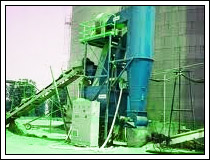Recycling of Industrial Effluent in Jamaica
An eco-friendly way of minimizing demands on freshwater resources by different industries is through recycling of industrial effluents. Initiated and implemented by the bauxite/alumina companies operating in Jamaica - the largest recyclers at present, the method has been gaining ground in various other industrial settings  as well. The main objective of this recycling method is to encourage industries to recycle process and waste waters, in the process reducing pollution and bringing sewage & effluent standards into line with international regulations and guidelines. as well. The main objective of this recycling method is to encourage industries to recycle process and waste waters, in the process reducing pollution and bringing sewage & effluent standards into line with international regulations and guidelines.
Recycling of Industrial Effluent - The Process
The bauxite/alumina industry produces "red mud" - a waste product rich in caustic soda and organics, and comprising over 70% of water. First of all, this waste is thickened to 28% solids and then carefully sprayed onto a sloping drying bed. The sprayed layer is usually 8 to 10 cm thick. The liquid fraction that accumulates at the toe of the drying bed then moves to a sealed holding pond through well laid pipelines. Pumps transfer the effluent from the holding pond back to the plant via the pipeline where it undergoes recycling.
The system is equipped with the following:
- Deep mud thickeners
- Pumps and pipelines to the drying beds
- Sealed drying beds
- A sealed effluent holding pond
- Recycling pumps and pipelines to the plant.
Advantages of Industrial Effluent Recycling
- This process decreases the rate of freshwater withdrawal from aquifers.
- Recycling of process water brings down the volume of caustic soda solution needed, as the caustic soda also undergoes recycling with the effluent.
- Energy consumption to pump freshwater from depths greater than 100 m is also reduced. This helps in reducing the import bill/foreign exchange for oil.
- Quality of groundwater is improved by this method.
- Low input costs brings down operational costs, which subsequently lead to higher profit margins for the companies and generation of more tax revenue for the government, increasing level of investment in the country as well as the GDP.
- The method increases the availability of freshwater for domestic and irrigation end use and consumption.
Disadvantages of Industrial Effluent Recycling
- Accidental spillages may lead to pollution of surface water resources
- As a capital-intensive process, it hardly has any effect on communities where unemployment rate is high.
- Technical problems encountered within the plants may easily reduce the level of production, affecting the volume of recycled effluent. Implementation of the technology may lead to disruption of agricultural lands in certain cases.
|